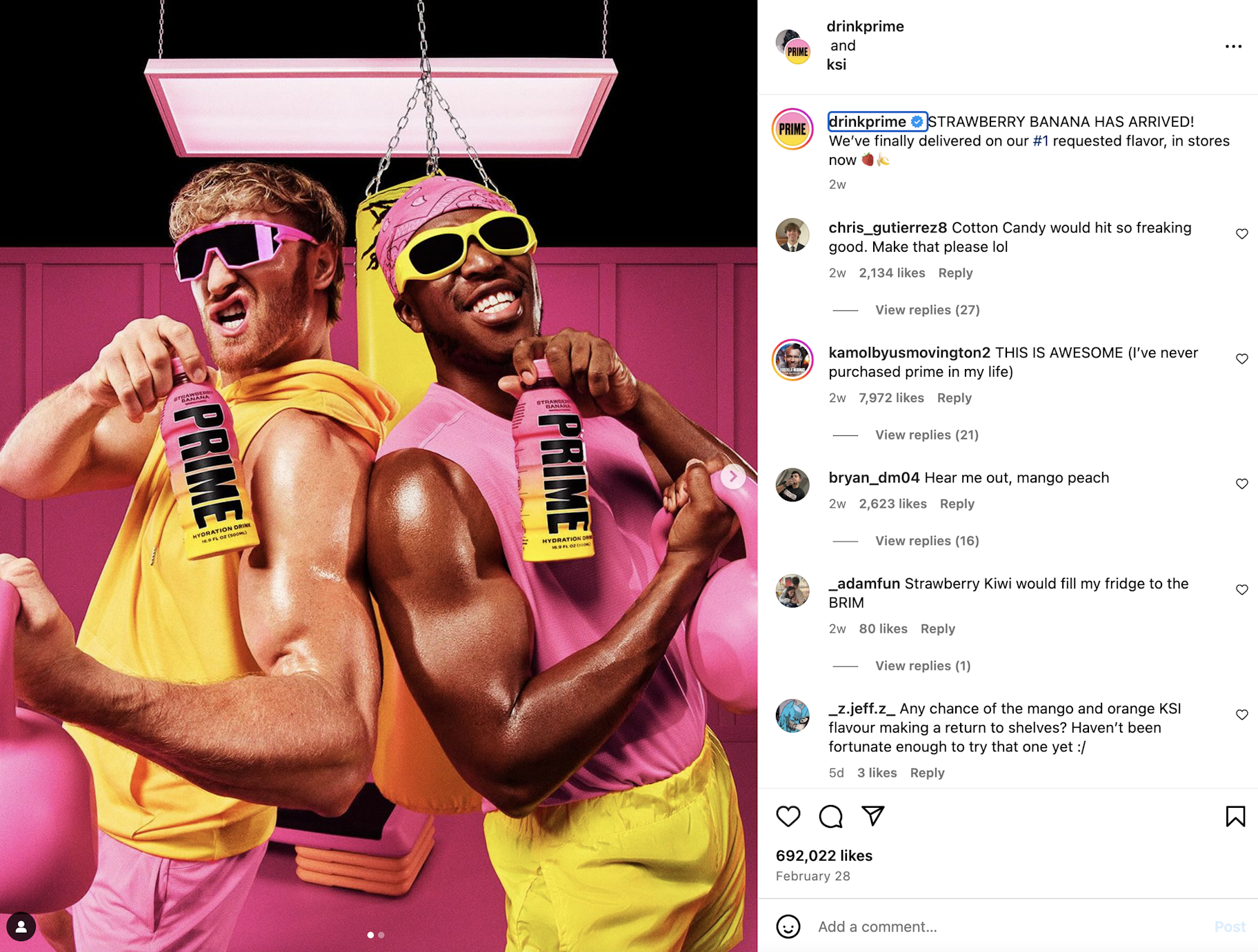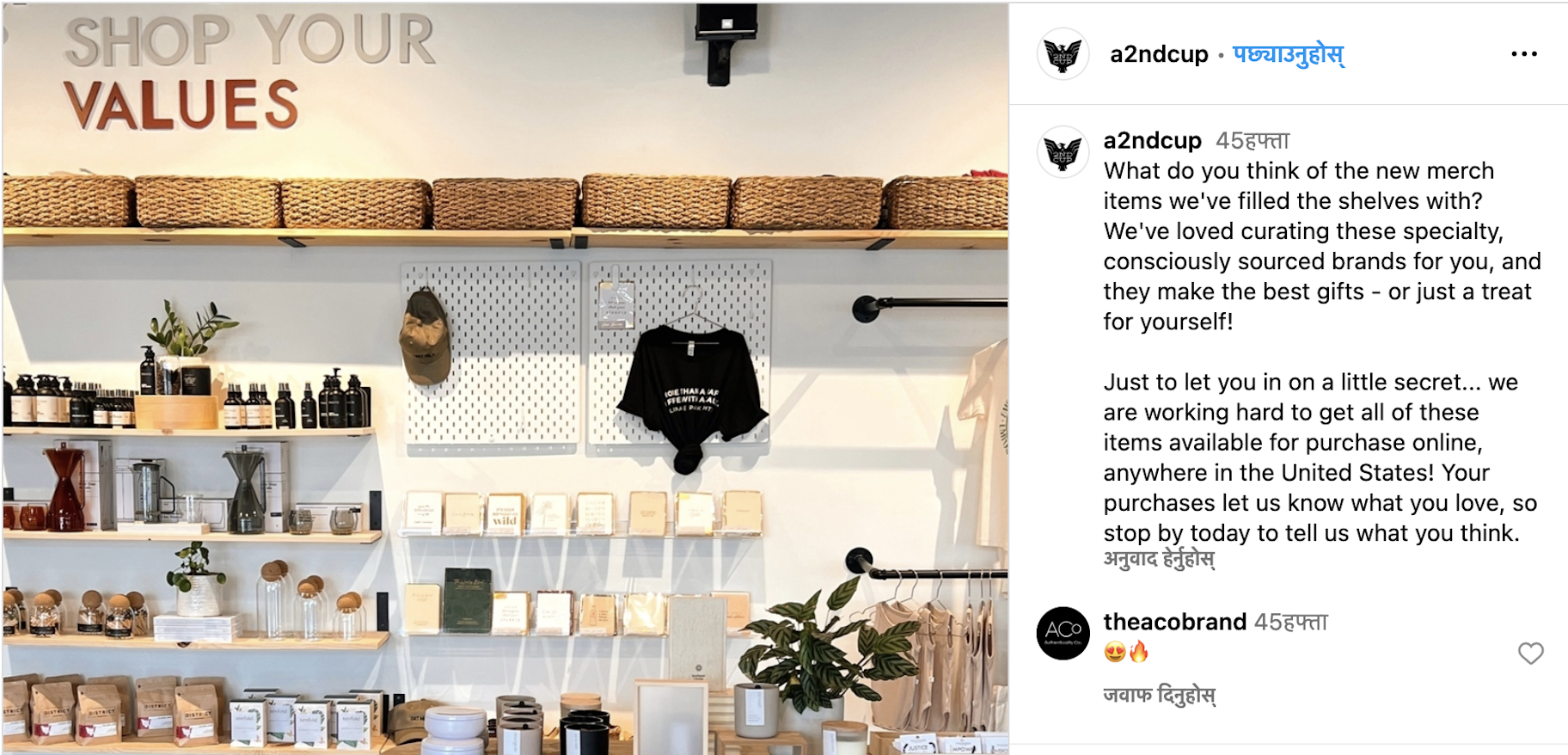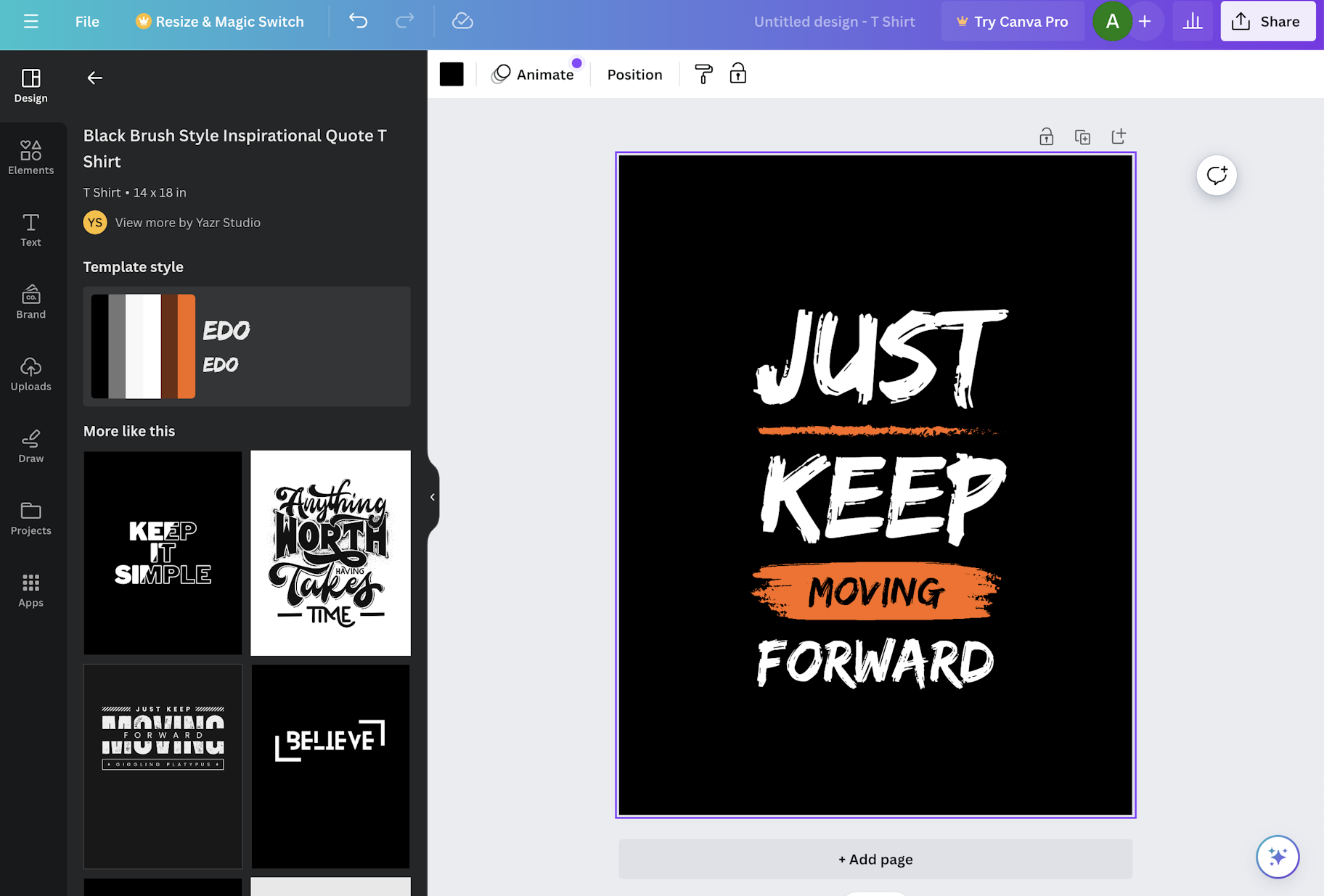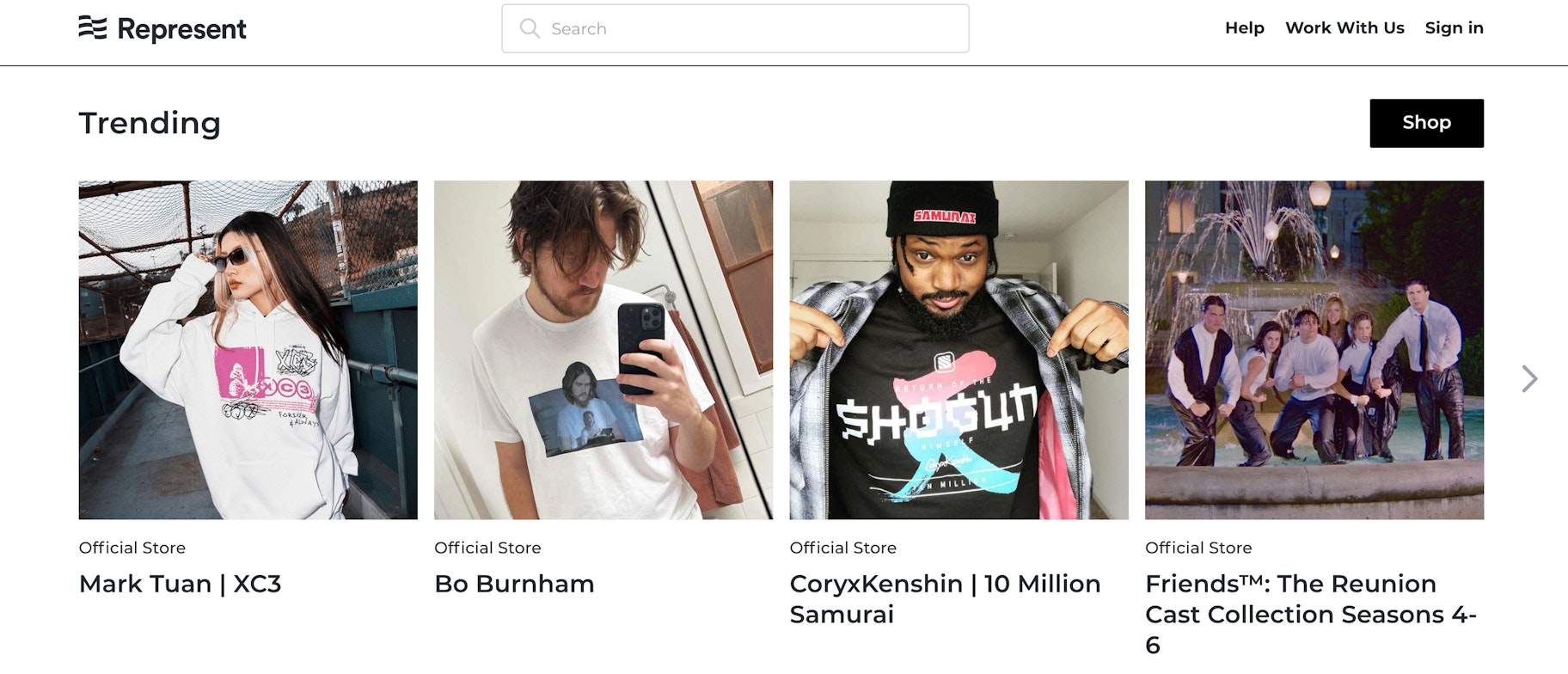Merch (short for “merchandise”) gives your fans a chance to connect with you and advertise their devotion to anyone who’s paying attention.
Whether it’s tees, backpacks, posters, or coffee mugs, merch makes your brand a part of people’s lives while creating a new revenue stream through product sales.
So where do you begin, and how do you get your merch in front of different audiences? This article walks you through all the steps necessary for creating and selling merchandise.



Selling merch under a sub-brand vs. your own brand
When creating your merch strategy, you’ll have the option to decide whether to launch a sub-brand or sell under your existing brand.
With a sub-brand, you can attract an audience beyond your existing products and content. And while sales might be slow in the beginning, you’ll lay the foundation for a distinct brand that complements the growth of your core business.
→ Click Here to Launch Your Online Business with Shopify
Famous YouTuber turned professional wrestler Logan Paul practices this strategy by selling an energy drink under a sub-brand called Prime.

Alternatively, you can leverage your existing brand by plugging your merch into your content. For instance, you can integrate products into the posts shared on your Instagram feed, with items tagged to make the posts shoppable.
How to make merch in four steps
Creating merch can be as simple as putting your brand’s logo on a t-shirt. But there’s a systematic approach you can take to produce merch that appeals to your brand’s current audience—and even some customers you haven’t yet reached:
1. Learn about your audience
The first step is to analyze how fans typically interact with your brand. Are they most active on X (formerly Twitter), Instagram, or TikTok? If you usually get engagement on TikTok, you can assume that most of your fan base comprises millennials and Gen Z.
You can then design custom merch for this audience based on their traits and shopping habits. Even better, why not ask them about what they’d actually buy? You can poll them through Instagram Stories, Facebook groups, or even email if they’re on your list.
Asking your audience for feedback also has the advantage of making them feel like they’re a part of the process and the merch you eventually create.

2. Brainstorm cool merch ideas
Now that you have an idea of what your fans want, you can move on to creating merch that appeals to their tastes. At this stage, your creative ability will be crucial in producing merch that people love.
While gaining traction by selling hoodies and t-shirts is possible, creating and selling unique merch is a great way to stand out in your space.
Consider the following merch ideas:
- Custom apparel: Unique clothing items like bespoke hoodies, t-shirts, and tank tops that allow fans to wear their support in style.
- Tote bags: Both functional and convenient, especially in an era where plastic bags are being banned.
- Patches and stickers: Allow fans to show their support no matter where they are.
- Keychains: Affordable to produce and practical for your followers.
- Tank tops: A great option for your audience to wear during the warmer months.
- Coffee mugs: Offer your followers a fun way to start their day with your brand in mind.
- Phone cases: Help people protect their devices while boosting your brand.
3. Design and mock up your products
This is where it gets exciting. Designing your merch is a great way to exercise your creative impulses while making something your audience will love. You can check out websites like 99Designs and Dribbble for ideas and inspiration.
When it comes to the actual design, you can use a free merch maker to create your graphics. Canva offers a merch maker that lets you customize designs from templates or upload your own graphics. With options for mockups and slogan generators, it simplifies creating products for any business or occasion.

Another way to create custom merchandise is to work with a merch designer. Platforms like Fiverr and Upwork are great places to find such professionals. When taking this route, keep the following tips in mind:
- Create a mood board. Fill your mood board with curated inspiration, examples, and references to give your designer a clear starting point for your merch.
- Clearly explain what you want. Communicate your brand identity as clearly as possible. Use visual examples and detailed descriptions to convey your vision and the emotions you want your merch to evoke.
- Offer context. Share your user profiles to help your designer understand who they are designing for. Providing any brand guidelines can also assist the designer in creating relevant merchandise.
Once you’ve received your designs, consider using a print-on-demand app like Printful to create mockup versions of your products. Sharing these mockups with your fans and asking for their feedback can help you validate your merch ideas while involving your fans in the creation process.
4. Find a manufacturer or print-on-demand partner
With your designs ready, it’s time to consider production methods for your own merchandise. Popular options include:
Print on demand
Print on demand lets you create your own merchandise at a low cost. You only pay for items when a customer buys them. However, the type of products you can make and how much you can customize them will vary with each provider. Basic apparel items like t-shirts, hoodies, and sweatpants are common across providers.
Make from scratch
If you’re not into DIY, you can partner with a manufacturer to produce the exact merchandise you have in mind. This approach gives you more creative control to bring your vision to life. However, it demands more investment and effort from you.
Look into companies like Fan of a Fan that help creators and brands make merchandise. But before you choose someone to work with, consider a few important points:
- Who keeps the rights to your designs and brand? Make sure you hold onto the rights to your designs and any new ones made during this partnership. This is key if you ever decide to go separate ways.
- How will you be paid? Will you pay a set amount, or will it depend on how much you sell? Sharing profits is common, and this can be anywhere from 15% to 50% of what you make.
- Don’t stick with one partner for too long. Try a short test run first, like three months or for a single product release. This lets you see if they meet deadlines, make quality stuff, answer emails quickly, and are reliable. After this test, you can decide if you want to keep working with them.
- Watch out for extra costs. Know all the potential costs upfront, including storage, shipping, design, managing a website, and handling customer service. You don’t want unexpected costs to surprise you after agreeing to share profits.
How to sell merch
Now that your merch is ready, it’s essential to get it in front of both existing fans and new customers. Below are a few marketing strategies you can use to sell your creations.
1. Generate word of mouth
Assuming you already have a fanbase, word-of-mouth marketing is going to be your most effective promotional tool. You can generate word of mouth by encouraging your audience to promote your brand by showcasing themselves using your products.
The easiest way is to run a social media contest asking people to try your products and tag you in their feedback. In return, you can offer a prize that your audience would find valuable, such as free shipping or early access to new products.
You can even create a branded hashtag they could use for the stories and images they upload with your merch. This will help you collect all the activities around your contest in one place, making it easy to track the involvement and results.

2. Leverage your existing channels
While word of mouth is one of the best ways to generate excitement about your merchandise, it’s only one option. You can also boost sales by using your existing channels to reach customers.
If you have a merch store on Shopify, you can easily sell your items by integrating your store where your followers live. Below are some channels you can explore:
- YouTube. Share links to your merch in your cards or video description, with a call-to-action at the end of your video.
- Instagram. Tag your merchandise in your Stories and posts, and direct your followers to your Instagram Shop if you have one.
- TikTok. Collaborate with TikTok creators to feature your merchandise in their content.
- Buy button. If you have a blog or website outside of your merch store, embed your collections or merchandise there too.
You can also use a link-in-bio tool like Linkpop to create a landing page that directs your social media followers to your products and other content.
3. Sell on marketplaces
If you want to access a bigger audience, consider listing your products on a merch marketplace.
A merch marketplace is an ecommerce site that curates products from different creators. Some charge a listing fee, while others work on a commission basis, taking a fee on every sale they bring you. Sites like Represent, Hello Merch, and MerchNow are some marketplaces where you can showcase your products alongside other creators.
Before creating a listing, be sure to check the rules and regulations of the marketplace you want to sell with. Most merch sites have their own terms and conditions for what kinds of products you can sell. Going through this information will also help you understand how commissions work and what percentage of the total sale price is paid out to the seller.

4. Retarget your existing audience
Retargeting lets you promote merch to your existing audience based on specific criteria, such as whether they have already made a purchase or follow your Facebook page. Many digital platforms allow you to create retargeting ads, including Google, TikTok, Snapchat, YouTube, and Facebook.
To start retargeting, you need to install the advertising pixel of your chosen platform on your website (for example, here’s how to do it for Facebook). Some platforms also let you use customer emails to build a retargeting audience of fans. Once you have this custom audience, you can then retarget them with ads showcasing your merch to boost engagement and sales.
5. Host a presale
A presale gives your followers a chance to buy your product before it launches so they can get it immediately upon release.
It’s a great way to build hype for your merch as well as gauge demand for new products before investing in stock.
To run a presale:
- Create a few exclusive merch items
- Photograph those items and list them on a separate webpage.
- Run a presale for a limited time (e.g., 48 hours)
- Remove the items from inventory and delete the page after 48 hours
- Communicate updates to buyers via email
You can use a crowdfunding site like Kickstarter to run your presale. Alternatively, get a preorder app from the Shopify App Store and set it up to manage your own presale.
Start selling custom merch today
Creating and selling merchandise brings more perks than just extra money. It brings your fans closer to your brand and makes them feel like they’re part of a bigger community. Take it as an opportunity to let your creativity soar, beyond the original content or products that drew your audience.
How to make merch FAQ
Does it cost money to make merch?
You can start making your own merch with hardly any upfront cost. If you can design, you can create the artwork yourself, mock it up with free tools, and then run a pre-sale in your store. Be upfront with your customers about delivery times. After seeing how many orders you get, you can place an order for the exact amount you need.
Does selling merch make money?
Yes, selling merch can bring in money. Many businesses earn by selling items like hats, t-shirts, mugs, and more. It’s a great way to supplement your income and might even grow into a major source of revenue.
Is it legal to sell merch?
Yes, selling merch is legal. However, you may need to obtain certain licenses or permits, depending on the regulations in your locality or state.



